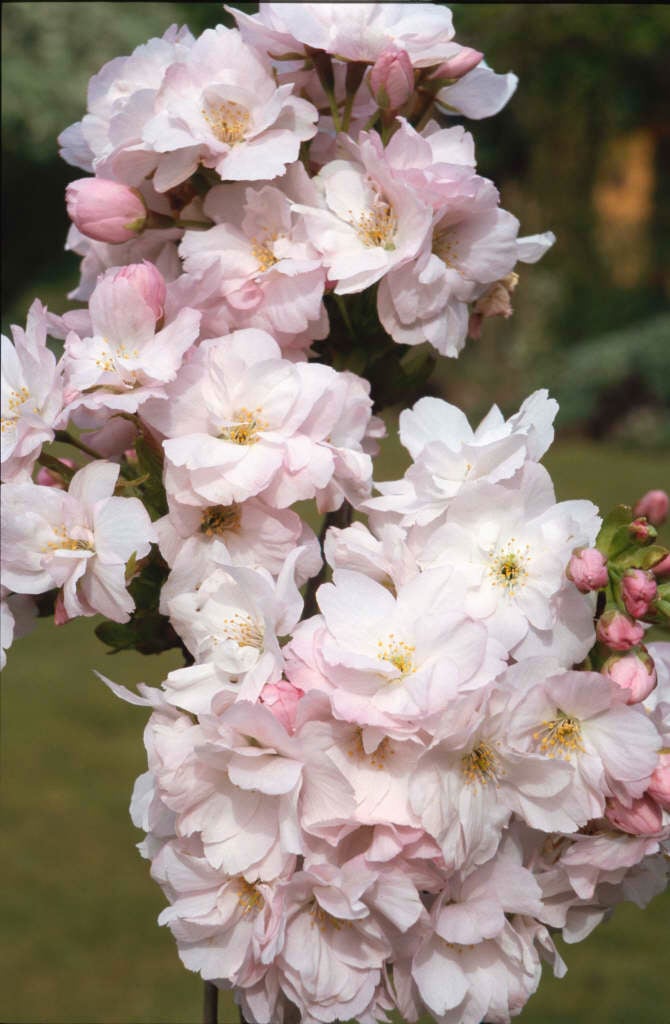Prunus 'Amanogawa'
cherry 'Amanogawa'
A small, narrowly fastigiate deciduous tree with slightly fragrant, semi-double, pale pink flowers in late spring; in autumn, the leaves turn orange and red
Synonyms
Prunus serrulata 'Amanogawa'Prunus serrulata 'Erecta'
see morePrunus serrulata 'Ama-na-gawa'
Prunus serrulata f. erecta
Size
Ultimate height
4–8 metresTime to ultimate height
20–50 yearsUltimate spread
2.5–4 metresGrowing conditions
Moisture
Moist but well–drained, Well–drainedpH
Acid, Alkaline, NeutralColour & scent
| Stem | Flower | Foliage | Fruit | |
| Spring | Pink | Bronze | ||
|---|---|---|---|---|
| Summer | Green | |||
| Autumn | Orange Red | |||
| Winter |
Position
- Full sun
Aspect
North–facing or West–facing or East–facing or South–facing
Exposure
Exposed or Sheltered Hardiness
H6Botanical details
- Family
- Rosaceae
- Native to GB / Ireland
- No
- Foliage
- Deciduous
- Habit
- Columnar upright
- Genus
Prunus can be deciduous or evergreen trees or shrubs with showy flowers in spring, and often good autumn foliage colour. Some have edible fruit in autumn, and a few species have ornamental bark
- Name status
Accepted
How to grow
Cultivation
Grow in moderately fertile soil in full sun
Propagation
Propagate by chip budding or grafting, although softwood cuttings in early summer with bottom heat can be successful
Suggested planting locations and garden types
- Cottage and informal garden
- City and courtyard gardens
- Flower borders and beds
Pruning
Pruning group 1. Prune in mid-summer if silver leaf is a problem
Pests
May be susceptible to caterpillars, leaf-mining moths and bullfinches
Diseases
May be susceptible to peach leaf curl, silver leaf, bacterial canker, blossom wilt and honey fungus
Get involved
The Royal Horticultural Society is the UK’s leading gardening charity. We aim to enrich everyone’s life through plants, and make the UK a greener and more beautiful place.
